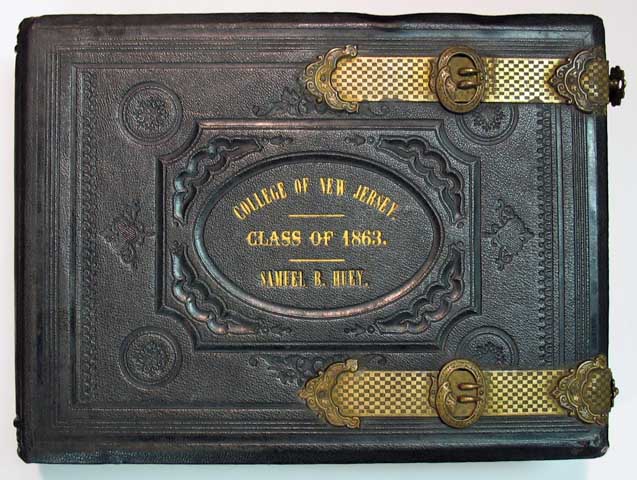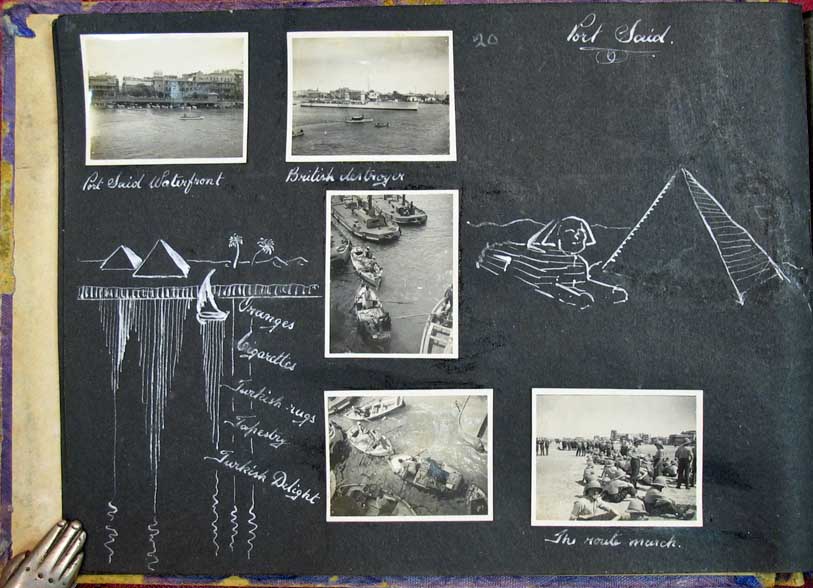Collectors of rare and antiquarian books are well aware that they must take specific measures to preserve and protect their collections. Condition directly impacts value, but perhaps more importantly, condition dictates how intimately you can experience the items in your collection; items that have deteriorated cannot be handled and studied with the same freedom as items that have been better protected.
 Common enemies of antiquarian books include direct sunlight, humidity, and vermin, along with substances like adhesives–and even other paper. The same holds true for antiquarian photographs and photo albums. But due to their more complex composition, these items often require even more specialized care.
Common enemies of antiquarian books include direct sunlight, humidity, and vermin, along with substances like adhesives–and even other paper. The same holds true for antiquarian photographs and photo albums. But due to their more complex composition, these items often require even more specialized care.
First and foremost, it’s important to store photographs and photo albums only in archival quality containers. These are made from chemically stable materials, so they won’t contaminate your collection. The picture frames available at most retail shops generally contain high-acid wood pulp, along with polyvinyl chloride. Both of these trigger deterioration, so it’s best to stick with metal frames when possible.
Individual Photographs
If you’re not planning to display your loose photographs, you can store them in polypropylene or polyester sleeves (the most common brand is Mylar), which are considered stable enough for long-term use. For smaller photographs such as cartes de visite, stereo views, or cabinet cards, it’s relatively easy to find the right size sleeves. The photographs should then be placed in an archival quality box.
 Larger photographs can be placed into individual polyethylene bags. If you’d prefer to display them, the best approach is to attach each photograph (and the original mounting board, if present) to 100% rag acid-free mat board with a window-mat of the same material hinged to fold over it. You can use acid-free linen tape to hinge the two mats together. This way, the photograph won’t come in contact with the frame’s glass, and you’ll hide the imperfections of the original mat.
Larger photographs can be placed into individual polyethylene bags. If you’d prefer to display them, the best approach is to attach each photograph (and the original mounting board, if present) to 100% rag acid-free mat board with a window-mat of the same material hinged to fold over it. You can use acid-free linen tape to hinge the two mats together. This way, the photograph won’t come in contact with the frame’s glass, and you’ll hide the imperfections of the original mat.
Some collectors prefer to place their antique photographs into period photo albums. While this will protect the photos from dust and fingerprints, it won’t protect them from deterioration. Furthermore, most such albums are relatively fragile in their own right, so they won’t stand up to frequent handling.
 Albumen prints are a special case. They tend to curl when removed from deteriorating albums. To combat curling, you have a few different options. A number of institutions embrace the practice of hinging albumen prints on all four corners, and this is a perfectly viable option. But the American Photographic Museum uses a different approach: they slip each print into its own clear polyester envelope and attach the envelope to a mat board with a hinged over-mat. Treated this way, the photos can then be framed if desired. This technique can be used with virtually any fragile item, not only photographs but also prints, maps, and ephemera.
Albumen prints are a special case. They tend to curl when removed from deteriorating albums. To combat curling, you have a few different options. A number of institutions embrace the practice of hinging albumen prints on all four corners, and this is a perfectly viable option. But the American Photographic Museum uses a different approach: they slip each print into its own clear polyester envelope and attach the envelope to a mat board with a hinged over-mat. Treated this way, the photos can then be framed if desired. This technique can be used with virtually any fragile item, not only photographs but also prints, maps, and ephemera.
Daguerrotypes, ambrotypes, and tin types also necessitate special consideration. These kinds of photos were usually sold originally in folding cases, with glass to protect the delicate surface of the image. But even a seemingly impervious material like glass can succumb to age; it may crack, get dirty, or become cloudy. If you’re tempted to replace the glass, consult a professional! This process requires extreme care; one stray touch can permanently ruin the image. You may also want to think about the impact of replacing the glass on the photograph’s value; many collectors prefer that daguerrotypes have their original seal intact, so replacing the glass could decrease your photograph’s value to potential buyers.
Caring for Antique Photo Albums
While caring for individual photographs is relatively straightforward, preserving antique photo albums can be a bit more complicated. This is because the various materials used to assemble the album can interact and trigger deterioration. Often antique photo albums will already show signs of damage, but it isn’t always due to these chemical interactions. In fact, damage is more often than not caused by other factors, such as humidity, improper handling, or poor processing.
Therefore, removing individual photographs from an album for preservation should be your absolute last resort, as dismantling the album often means losing the inscriptions, order, and presentation of the album. And you may damage the photographs in your attempt to remove them from the album. Conservators often recommend interleaving photo albums, that is, placing leaves of acid-free paper or plastic sheets between the album’s pages to protect them from each other. The pitfall of interleaving, however, is that it can strain the album’s binding.
If an expert recommends that you go ahead and disassemble an album to protect the photographs, you can take color photocopies of individual pages to record the album’s order, layout, inscriptions, and captions. In most cases, an experienced conservator should perform the task of removing the photos. With old self-stick albums or those with plastic cover sheets, the adhesive dries up over time, so photographs may fall out on their own.
As with any attempt at conservation or preservation, it’s best to consult an expert before attempting anything on your own. Although the field of photograph conservation is relatively new, there are numerous consummate professionals who will be happy to consult you on the best approach for an item in your collection.



